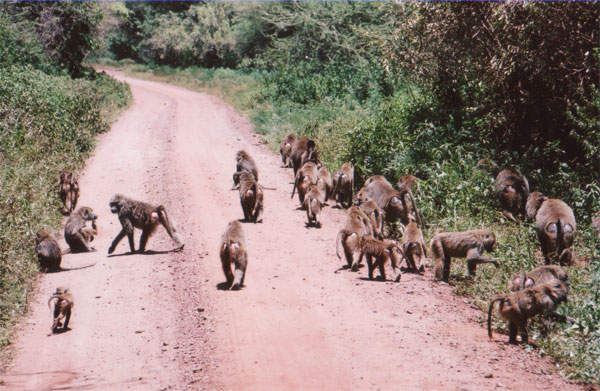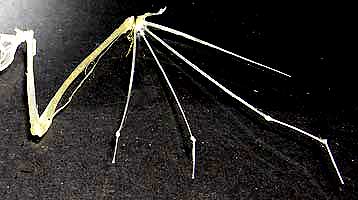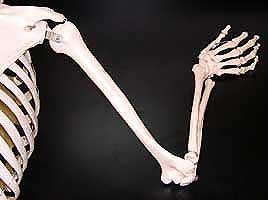Lemurs:
a.)
Lemurs primarily reside in the tropical
rainforests of Madagascar. Rainforests are typically humid, and has a lot of
foliage.
b.)
My provided trait is Sociality and Mating patterns.
The lemur social system is usually a group of no more than fifteen individual
lemurs. The mating patterns for lemurs are that they breed depending on the
season.
c.)
An environmental factor that has caused the
lemurs to be seasonal breeders is that they mate depending on the availability
of food in order to match up the highest availability of food with the weaning
period of the lemurs. The environment can also be a factor as to why the lemurs
run in fairly large packs, so as to gather food without fear of competition
from larger predators.
a.)
Spider Monkeys are tree-top surfers. Spider
Monkeys reside in semi deciduous and mangrove forests.
b.)
The spider monkey social system is fairly
similar to our own. Spider monkeys live in medium sized groups, and even the
spider monkey loners stay within a close proximity of the groups. Also, like
us, the females are better at finding a better variety of food than the males.
Spider monkeys do not have a particular mating season, like us they mate
year-round.
c.)
Forests are home to many predators, both large
and small, so it makes sense that spider monkeys tend to travel in fairly
large-sized packs in order to defend themselves.
Baboons:
a.)
Baboons live in a variety of different habitats
and are very adaptive. The primary requirements of their habitat are that there
is a water source and safe sleeping places (like trees and mountain sides).
b.)
Baboons also travel in groups of about 50
individuals, with a primary focus of that group being the women and children.
Baboons also have a social hierarchy that promotes a single female as the
leader. The mating patterns of baboons vary by group. The females are the
primary caretakers of the young. There is no information on seasonal breeding,
so I assume that they are an all-year breeding species.
c.)
Baboons travel in large groups, much like human
settlers, but the hunting is generally carried out by a much smaller group.
Baboons are very cunning and many groups thrive off of human developments in
urban and sub-urban environments in order to snatch pre-gathered food from us.
This smaller group can gather food with much less risk to the entire tribe,
seeing as how baboons biggest predator seems to be humans.
Gibbons:
a.)
Gibbons are primarily located in the old growth
tropical rain forests of Southeast Asia
b.)
Gibbons are very similar to humans. They are
diurnal, they live in small family groups (mother, father, and children), and
they often groom each other. Gibbon mates generally stay together for their
entire lifespan. Gibbons are able to reproduce at twelve years old, and the
females are pregnant for approximately seven months, and only have one child
generally.
c.)
Overall, the gibbons almost mimic the human
life. Once the child becomes of-age, it ventures out into the unsuspecting
world to find a mate. I am having a hard time thinking of environmental reasoning
as to why they mate the way they do, or as to why the live in small,
family-like groups.
d.) 

Chimpanzees:
a.)
Chimpanzees are generally found in wet savannas
and rain forests.
b.)
Chimpanzees live in large communities that
consist of multiple males and females. Chimpanzees also have a social hierarchy
that is dictated by one individual’s influence on others. Chimpanzees become
capable of reproduction at sixteen years of age. There is no evidence of a
birth season, and it seems that they are not seasonal breeders. Mating
partners, once in a community, are generally dictated by the hierarchy.
c.)
Forests are filled with large predators, so
living in large communities is a way for them to protect their groups without
being a very large species.
d.)

Summary:
In the end, I have found that, across all of the species,
there isn’t really a whole lot in common with mating. However, their social
systems and statuses are very similar. There always seems to be a social
hierarchy for all of the primates. Although their mating patterns differ quite
a bit, their setup of ‘families’ seems to be the same in which the female
provides the primary care for the offspring and the males are the actual
gatherers of food and primary guardians of the family.






